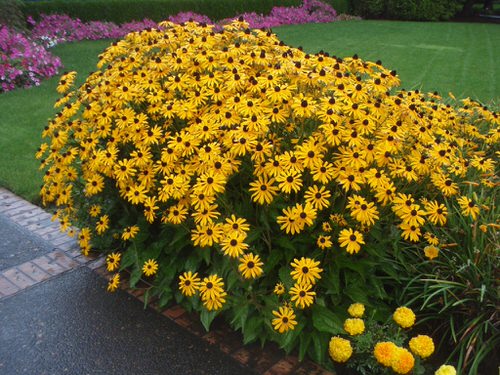Do you know what is Maryland’s State Flower? Fret not! We will tell you about it and give you all the info on How to Grow It!
If you do not know about Maryland’s State Flower, we are happy to help you! Keep reading to find out How to grow It!
Check out our post on flowers that grow in Hawaii here
State Flower of Maryland
- In 1918, Black-Eyed Susan was declared the official State Flower of Maryland.
- You can easily spot the State Flower on roadsides and fields in Maryland. The colorful yellow-gold petals encircle a large black center. The gold and black color combination also match the state cat, bird, and insect.
- There are over 90 varieties of Black-Eyed Susan. It is also popular as Coneflower, because of its cone-like centers.
- Usually, it stays in a basal rosette form for the first year and then produces upright branching stems with blooms in the second year.
Check out the Georgia State Flower and How to Grow It here
How to Grow the State Flower of Maryland?

Where to Grow
The State Flower of Maryland grows best when exposed to full, bright, direct sunlight for 4-5 hours. If you live in a hot zone, it would be best to give it shade from the intense afternoon heat.
Best Soil
This beautiful wildflower is not picky about the growing medium and thrives well in average, well-draining soil. All Rudbeckias can tolerate various soil kinds, from loam to clay. Also, add organic matter to help retain moisture.
Watering
Water the State Flower of Maryland whenever the top 2-3 inches of the soil feels dry to the touch. If the leaves droop, you should know the plant requires deep watering.
Fertilizer
Do not overfertilize the State Flower of Maryland, as it will weaken the stem, inhibiting flowering. Use a slow-release, all-purpose fertilizer of 12:6:6 blend, diluted to half the strength, 1-2 times a year.
Pruning
If you deadhead these flowers, they will bloom longer. Cut off faded, spent, or dried-up blooms.
Pests and Diseases
Although Black-Eyed Susan is rarely susceptible to severe pests and diseases, it can be attacked by two fungal diseases – Angular leaf spots and Septoria.
Remove dead, damaged, or infected plant parts to bar the spread. Do not wet the leaves, and provide good ventilation to the plant.



